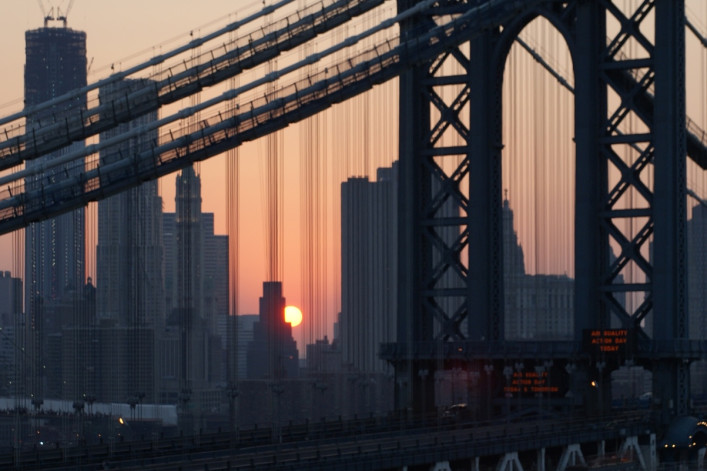An Elevator View of the NYC skyline

Photographer Stewart Mader has an interesting perspective when it comes to his work. Unlike most camera aficionados who shoot at or below the horizon, Mader captures views from above.
In January 2011, shortly after he began working as the director of social media for a non-profit on the 22ndfloor of a Midtown Manhattan skyscraper, Mader started Elevator View, a photo-blog illustrating some of the most renowned buildings in New York.
The vantage point from his office offered striking views of Rockefeller Center, the Waldorf Astoria Hotel, St. Patrick’s Cathedral, and the Burberry Building, among others.
This perspective inspired him to shoot from various points around the city and in turn, he is always on the search for new locations to add to the collection.
The name “Elevator View” symbolizes the views that he accesses for the project -- above street level, but are not aerial.
The project is also meant to recognize the importance of the elevator in city life, which has been essential to the growth of New York and other major cities. The logo, which Mader designed, symbolizes both the elevator and the iconic skyscraper Empire State Building.
He typically goes "shooting" a couple times a month.
“Shoots generally take me an hour, and I schedule them close to sunset to get the best light. I often take around 100 photos, and edit the batch down to 10 that best capture the views," Mader says.
But finding the best vantage point to photograph isn't always easy.
"Because of the nature of the project, I can't really expect to have spontaneous access to the upper floors of most buildings, so I arrange access in advance. Sometimes people who follow the project on Twitter offer me access to their views; otherwise I contact property managers at buildings I like to photograph from, and request access,” he explains.
Elevator View is intended to be more than a casual project. Mader keeps a list of the view locations and has developed a sort of catalogue with names and captions.
“Every photo I publish is titled with the primary elements of the view (buildings, parks, streets, etc.), and the caption includes the address and height from which the photo was taken. If someone wanted to recreate the views 50 or 100 years from now, I want them to know exactly where to find the vantage point, so they could accurately show how the built environment has changed in that time.”
Mader would like to contribute his photos to the Museum of the City of New York or the Library of Congress, and those institutions would probably want that information in order to accept the collection.
"I'm planning to sell limited-edition prints in time for the holidays," he says. (Check out this page on Elevator View with some details and a sign-up form to be notified when they're available for purchase.)
“I'm hoping that media coverage will continue to raise the profile of the project and get the attention of art organizations like the ones mentioned above, which are pretty exclusive when selecting the work they help curate.”
Related posts:
Cool Stuff: Get your nabes on camera with the On My Block neighborhood film project
























